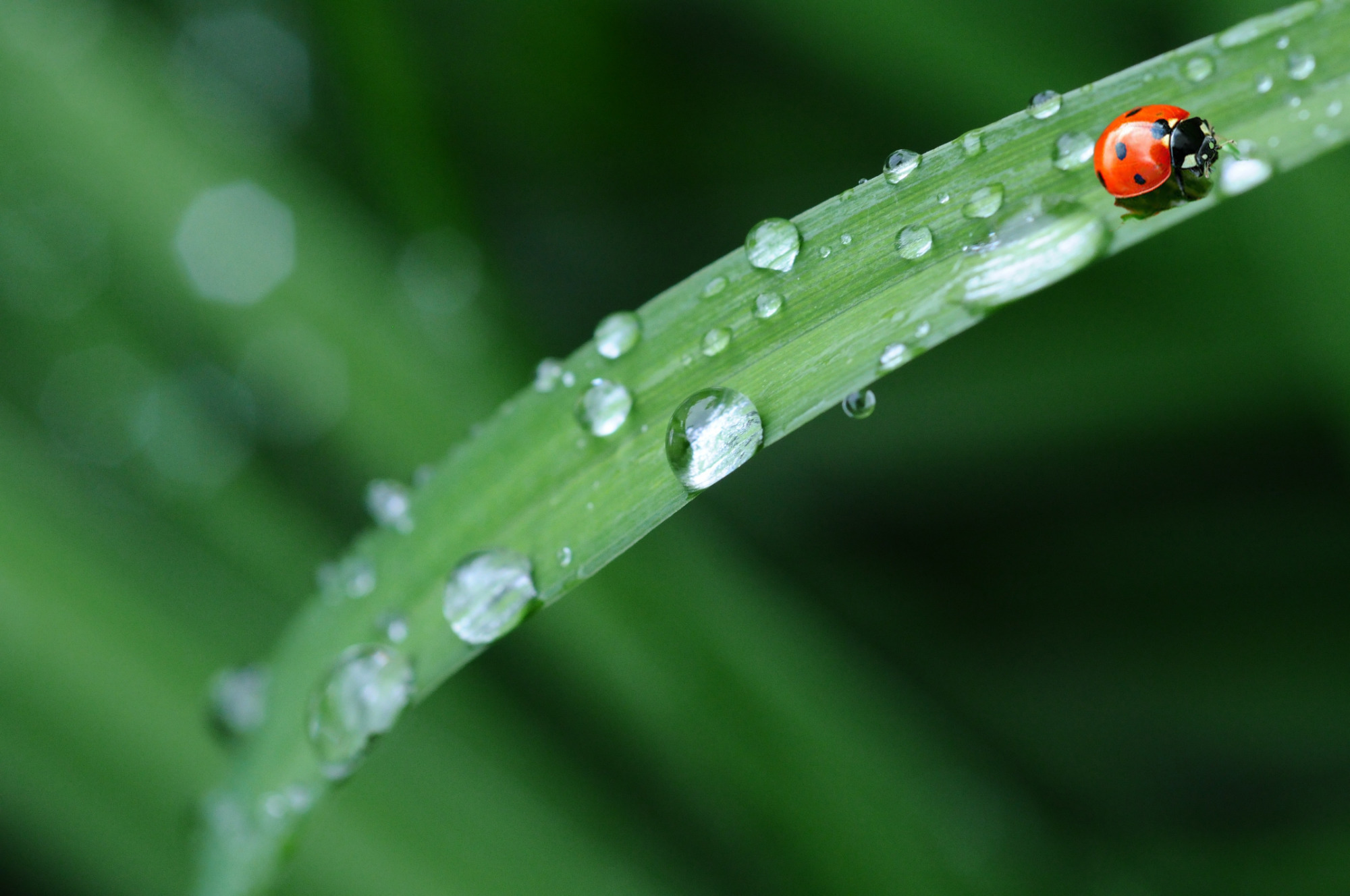 Evolution & Behaviour
Evolution & Behaviour
Raincoats in nature: waterproof armors for insects and plants
Imagine bowling balls are falling at you from the sky – it’s pretty much what small insects experience when it’s raining. How do they survive such a dangerous situation? We discovered how the special waterproof armors insects and plants wear protect them from ‘violent’ raindrops.

Raining is perhaps spectacular, but for small insects or plant leaves, fast-falling raindrops with high impact can be very dangerous. Imagine how scary if bowling balls are falling at your head from the sky. What kind of trick do they use to protect themselves?
As a surviving strategy, small insects and plant leaves use special water-repellent coatings, called superhydrophobic surfaces. The term superhydrophobicity means the property of extremely low affinity to water (in contrast to superhydrophilicity). The superhydrophobic surface is made up of many micro- and nano-scale "needles". These needles – tightly packed throughout the surface – can hold up a waterdrop and transfer it among them, like people's arms holding up the lead-signer as she crowd-surfs. This allows water to slide on the surface while keeping it dry.
The superhydrophobic coating, with the slippery surface, renders two benefits. Firstly, it prevents bacteria from adhering and growing on the surface. Secondly, it cleans itself – the water droplets slide off together with any dust that was attached to the surface. Because of these characteristics, superhydrophobic materials are used for industrial products such as air or water filters that trap bacteria and exterior paint that maintains the wall clean. Despite our extended understanding of its usefulness, we still don't know how insects' or plants' superhydrophobic surface coating mechanically works to protect their own bodies from violent raindrops.
To address this question, we set out to investigate how the superhydrophobic coating affects the contact between the surface and a falling raindrop. Understanding contact duration allows us to analyze the exchange of key physical information between them: heat and momentum (the amount of force driven by an object's motion). To do so, we tracked the motion of a droplet colliding with biological surfaces (e.g. plant leaf and insect wing) by using synchronizing high-speed cameras. We further used a microscope to obtain more detailed information, such as the surface's roughness and the contact angle between the raindrop and the surface.
Our results demonstrated that a high-speed raindrop got shattered into smaller pieces on micro-scale needles on the surface and thus reduced its contact duration with the surface. Shorter contact time limits the transfer of heat and momentum. Imagine you hold a hot bread. You may perhaps toss the bread back and forth between two hands to reduce the heat transfer from the hot bread to your palm by shortening the contact time. This "tossing a hot bread" strategy might be good enough, but unfortunately, small insects and plants cannot toss a heavy raindrop around. Instead, they evolved the special water-proof armors and these perform a similar role, using the very different approach.
In summary, we discovered that the superhydrophobic coating on a body surface reduces its contact time with fast-falling raindrops by shattering them into smaller pieces, which, in turn, limits the transfer of heat and momentum (or impact force) from raindrops to the body. As raindrops are colder than their body temperatures, the superhydrophobic coating likely helps small insects to maintain the temperature in their flight muscles, so that they are ready to escape from predators. More generally, the special waterproof "armor" helps ease the impact force of fast-falling droplets that could damage insect bodies and plant leaves. Stay dry to survive another day!
Original Article:
Kim, S., Wu, Z., Esmaili, E., Dombroskie, J. J. & Jung, S. How a raindrop gets shattered on biological surfaces. Proc. Natl. Acad. Sci. U. S. A. 117, 13901-13907 (2020).
Next read: Carnivorous plants help uncover universal rules of plant development by Beatriz Gonçalves , Christopher Whitewoods
Edited by:
Dr. Akira Ohkubo , Associate Editor
We thought you might like
How did ant-plant interactions evolve?
May 3, 2019 in Evolution & Behaviour | 4 min read by Matthew P. Nelsen , Richard H. Ree , Corrie S. MoreauInsect microbiomes – a new hope against antimicrobial resistance?
Aug 2, 2019 in Microbiology | 3.5 min read by Fabio PalmieriAgriculture and climate change driving worldwide insect declines
Aug 2, 2023 in Earth & Space | 3 min read by Peter McCannMore from Evolution & Behaviour
Feisty fish and birds with attitude: Why does evolution not lead to identical individuals?
Aug 31, 2024 in Evolution & Behaviour | 3 min read by Lukas Eigentler , Klaus Reinhold , David KikuchiRudimentary form of syntax present in chimpanzees
Nov 29, 2023 in Evolution & Behaviour | 3 min read by Maël LerouxAn incredibly massive ancient whale skeleton reveals a new way to become a giant
Nov 27, 2023 in Evolution & Behaviour | 4 min read by Olivier LambertVikings and Migrants: Unravelling Scandinavia's Genetic Mosaic in the Viking Era
Nov 13, 2023 in Evolution & Behaviour | 3 min read by Anders Götherström , Ricardo Rodríguez VarelaEditor's picks
Trending now
Popular topics


